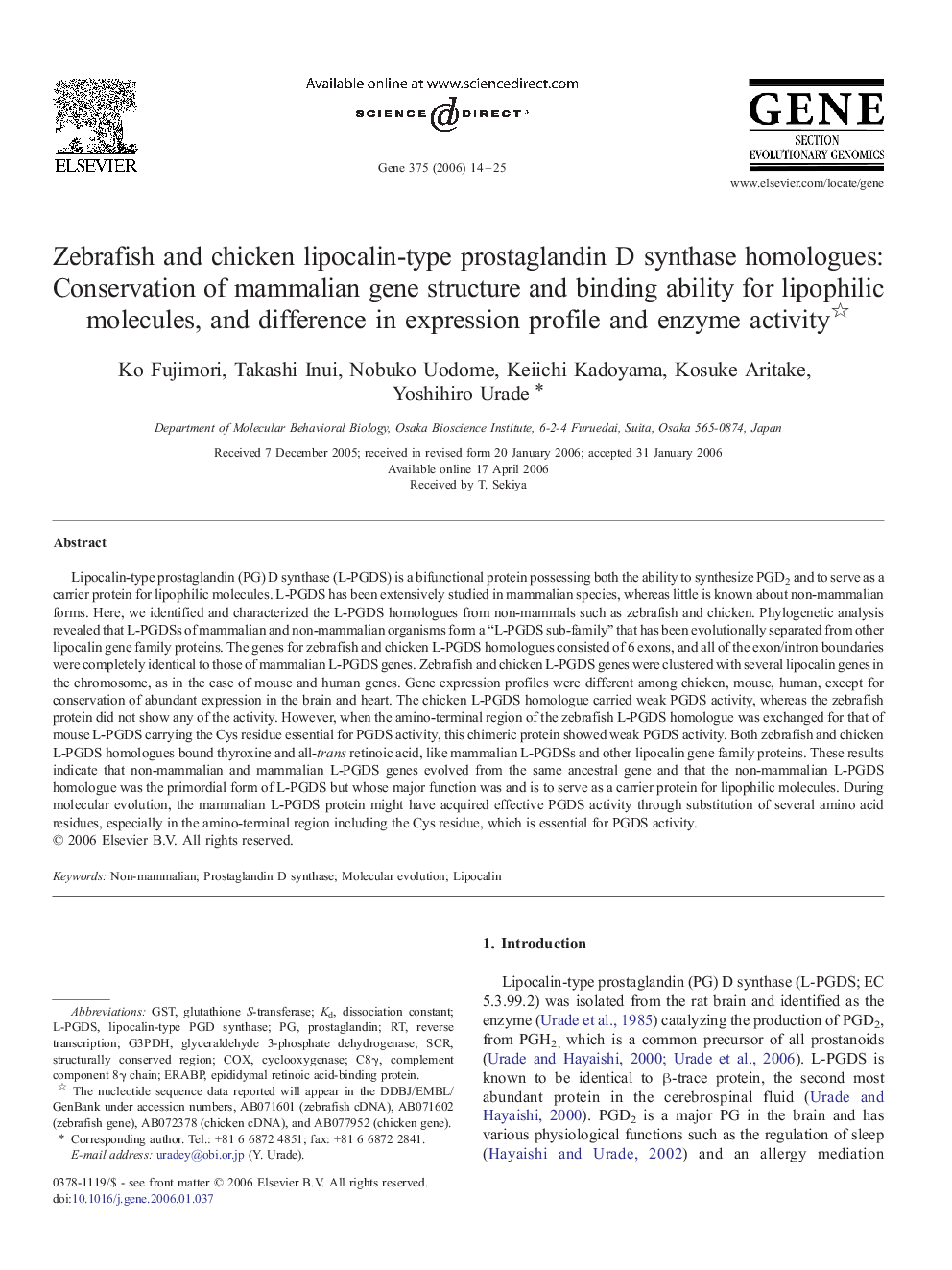| کد مقاله | کد نشریه | سال انتشار | مقاله انگلیسی | نسخه تمام متن |
|---|---|---|---|---|
| 2820294 | 1569951 | 2006 | 12 صفحه PDF | دانلود رایگان |

Lipocalin-type prostaglandin (PG) D synthase (L-PGDS) is a bifunctional protein possessing both the ability to synthesize PGD2 and to serve as a carrier protein for lipophilic molecules. L-PGDS has been extensively studied in mammalian species, whereas little is known about non-mammalian forms. Here, we identified and characterized the L-PGDS homologues from non-mammals such as zebrafish and chicken. Phylogenetic analysis revealed that L-PGDSs of mammalian and non-mammalian organisms form a “L-PGDS sub-family” that has been evolutionally separated from other lipocalin gene family proteins. The genes for zebrafish and chicken L-PGDS homologues consisted of 6 exons, and all of the exon/intron boundaries were completely identical to those of mammalian L-PGDS genes. Zebrafish and chicken L-PGDS genes were clustered with several lipocalin genes in the chromosome, as in the case of mouse and human genes. Gene expression profiles were different among chicken, mouse, human, except for conservation of abundant expression in the brain and heart. The chicken L-PGDS homologue carried weak PGDS activity, whereas the zebrafish protein did not show any of the activity. However, when the amino-terminal region of the zebrafish L-PGDS homologue was exchanged for that of mouse L-PGDS carrying the Cys residue essential for PGDS activity, this chimeric protein showed weak PGDS activity. Both zebrafish and chicken L-PGDS homologues bound thyroxine and all-trans retinoic acid, like mammalian L-PGDSs and other lipocalin gene family proteins. These results indicate that non-mammalian and mammalian L-PGDS genes evolved from the same ancestral gene and that the non-mammalian L-PGDS homologue was the primordial form of L-PGDS but whose major function was and is to serve as a carrier protein for lipophilic molecules. During molecular evolution, the mammalian L-PGDS protein might have acquired effective PGDS activity through substitution of several amino acid residues, especially in the amino-terminal region including the Cys residue, which is essential for PGDS activity.
Journal: Gene - Volume 375, 21 June 2006, Pages 14–25